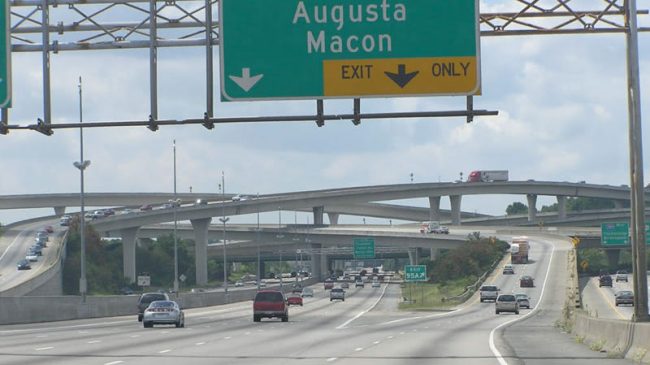The collapse of the I-85 bridge in Lindbergh and the ensuing traffic disaster showed Atlanta doesn’t have sufficient infrastructure for today, let alone the future. The Atlanta Regional Commission projects metro Atlanta’s population will reach eight million by 2040, so it’s not a matter of whether the region needs more highways or more transit — it needs both.
Atlanta needs to continue building a network of toll lanes that provide a congestion-free travel option. The opening of the express lanes on I-75 in Henry County has reduced rush-hour congestion between I-675 and McDonough by up to 80 percent. The Georgia Department of Transportation (GDOT) is building toll lanes on I-75 in Cobb and Cherokee, and expanding the I-85 toll lanes in Gwinnett. The agency plans to add lanes to the top end of I-285 and SR 400. I-20 and other parts of I-285 need express lanes as well.
The region still needs to fix the major missing link in its highway network — a connection between I-85 and SR 400 in Brookhaven and I-675 and I-285 in Clayton County. GDOT planned to build I-485 in this area, but the neighborhood was opposed to a surface roadway for good reason. A better option is a six-lane tunnel that would avoid neighborhoods. Georgia Tech researchers found the tunnel would do more to improve mobility in the region than any other expressway improvement. It would reduce congestion on the Downtown Connector, I-285 and surface streets. To help pay for it, motorists would pay a variable toll based on congestion levels in the tunnel. It can be done: Florida built a truck tunnel to connect the Port of Miami to highways and France built a tunnel under Versailles.
Metro Atlanta must also improve its busiest surface streets. Some sections of major roadways, such as SR 138 in Clayton County and SR 120 in Fulton County, haven’t been improved since they were built long ago. These windy, country roads have high rates of traffic fatalities and extreme levels of congestion.
The region should also test a transportation concept called managed arterials, which take a six-lane surface street, like SR 140, and add optional, tolled bypasses (bridges or tunnels) at busy intersections. Buses and vanpools can use the bypasses for free, while vehicles pay a small toll — 25 cents — to skip the wait at busy intersections. These bypasses can significantly reduce congestion at intersections and their construction can be funded, in part, by the toll revenues they’ll generate.
There’s also a critical role for mass transit in the long-range plan. While rail expansions sound sexy, Atlanta’s low density — population and employment — makes buses a better transit option. The continuing decline of transit trips per capita, which have decreased since MARTA first opened, suggests the current approach to transit is failing.
Atlanta needs a transit system that’s flexible and offers a variety of bus services. In regular traffic, buses are unpopular because they don’t go any faster than cars. But buses in express lanes can move significantly faster than autos, encouraging commuters to leave their cars at home. SRTA already offers express bus service on area Interstates, including the I-75 and I-85 express lanes and should do the same for future express lane expansions.
Bus rapid transit (BRT) service typically travels on major surface streets, complementing the express bus routes on highways. BRT utilizes several tools to create faster service, including giving buses priority at traffic signals to help make the bus trips faster than car trips. BRT would work particularly well with managed arterials, which would allow the buses to bypass busy intersections.
Keith Parker at MARTA deserves credit for improving the agency’s bus network. However, gaps persist and most suburban county bus networks are deficient. The state could provide matching funds to transit agencies, counties, and cities for local bus service. The local entity would put up 50 percent of the funds and the state would match. This type of funding could help improve local bus service in all of metro Atlanta’s counties.
But perhaps the most intriguing options come from automated vehicles, which could transform the way we travel and are expected to cause the demand for transit services to decline by up to 50 percent over the next 30 years. Self-driving cars and the sharing economy offer the possibilities that future auto ownership and traveling habits will be significantly different than today’s.
If self-driving cars and buses are the future, Atlanta will need infrastructure for them. If adoption rates are slow or self-driving cars don’t catch on, Atlanta will still need better infrastructure just to keep up with the expected growth in population. Investing in cost-effective transit and embracing infrastructure projects that can be directly funded by their users — like toll roads and managed arterials — will enable Atlanta to meet the coming demand.
Baruch Feigenbaum is Assistant Director of Transportation Policy at Reason Foundation. This article originally appeared in the Atlanta Journal-Constitution.

